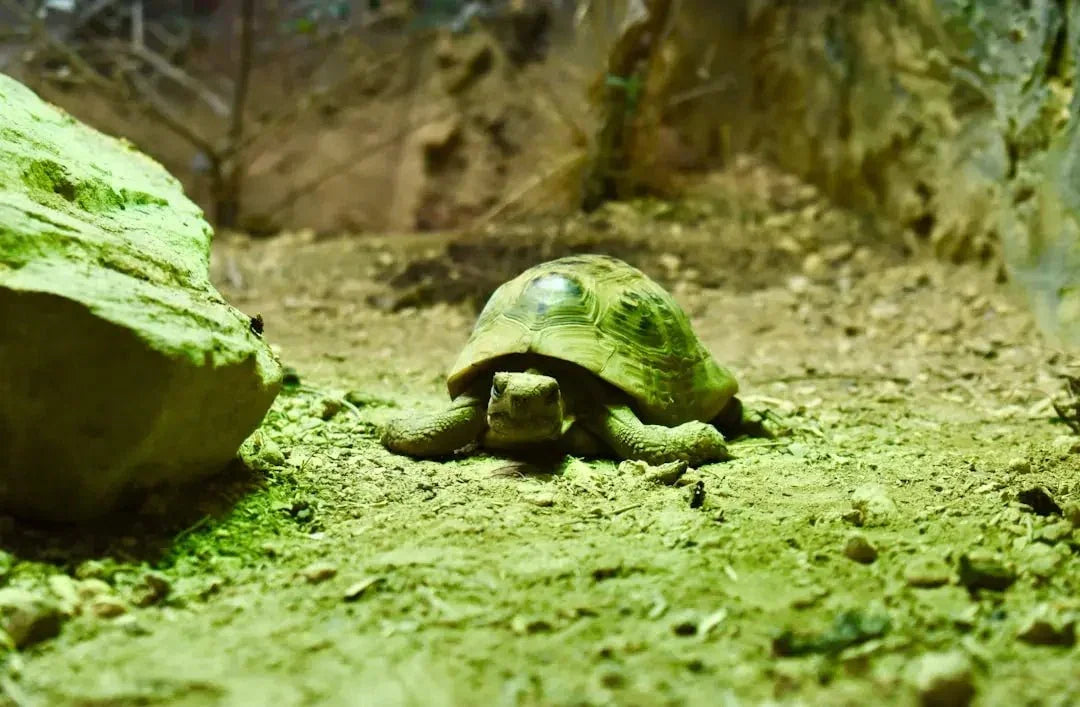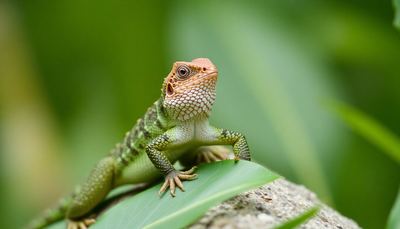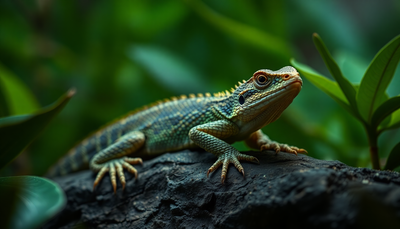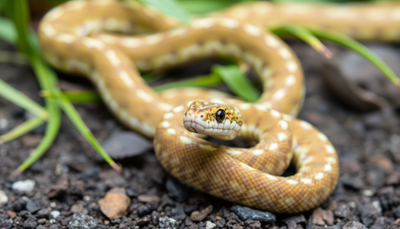Welcoming a tortoise into your home is an exciting journey. These gentle creatures bring joy and curiosity to any household. But, understanding their care needs is crucial.
One key aspect of tortoise care is providing the right heat. Tortoises are ectothermic, relying on external heat to regulate their body temperature. This means a heat lamp is not just a luxury—it's a necessity.
A heat lamp helps create a warm basking area, essential for your tortoise's health. Without it, they can't digest food properly or stay active. The right temperature also supports their immune system and overall well-being.
But how do you choose the right heat lamp? What are the specific requirements? These questions can be daunting for new pet owners. Don't worry, though. We're here to guide you through the essentials.
In this article, we'll explore everything you need to know about tortoise heat lamp requirements. From choosing the right lamp to setting up the perfect enclosure, we've got you covered. Let's dive into the world of tortoise care and ensure your shelled friend thrives.
Why Tortoises Need Heat: Understanding Their Natural Needs
Tortoises, like other reptiles, are ectothermic. This means they rely on external heat sources to regulate their body temperature. In their natural habitats, the sun provides warmth they need to function.
Without proper heating, tortoises struggle with basic activities. Their digestion slows down without sufficient heat. This can lead to severe health issues, affecting their growth and energy levels.
In the wild, tortoises move between sunny and shaded areas. This allows them to maintain an optimal body temperature. Similarly, in captivity, we must mimic this environment to keep them healthy.
Here's why heat is vital for tortoises:
- Digestion: Proper warmth aids digestion and prevents complications.
- Metabolism: Heat supports their metabolic rate, crucial for energy.
- Immunity: Adequate temperature strengthens their immune system.
Providing a heat lamp ensures they have a designated area to bask and warm up. It helps simulate the natural conditions they're adapted to. Without it, they can face severe health challenges and suffer discomfort.
The Role of Heat Lamps in Tortoise Care
Heat lamps play a crucial role in a tortoise's well-being. They mimic the sun's warmth, providing necessary heat for survival. Without them, tortoises may struggle to regulate their body temperature.
In an indoor enclosure, a heat lamp is indispensable. It creates a basking area, which is vital for thermoregulation. Here, tortoises can warm up or cool down, maintaining their health effectively.
Beyond just warmth, the consistent heat helps facilitate proper digestion. Cold temperatures can hamper their digestive process, leading to potential health problems. Warmth ensures their digestive system functions optimally.
Key roles of heat lamps include:
- Maintaining Temperature: Offers a stable environment.
- Encouraging Activity: Warmer temperatures promote movement.
- Preventing Illness: Reduces risks of temperature-related ailments.
Selecting the right heat lamp involves understanding specific needs. Many options exist, including infrared and ceramic lamps. Each offers unique benefits, ensuring you find the perfect match for your tortoise.
Tortoise Heat Lamp Requirements: Temperatures, Placement, and Safety
Understanding heat lamp requirements is critical for your tortoise's well-being. Temperature, placement, and safety are essential factors to consider. Each plays a role in ensuring a healthy environment.
For most tortoises, the ideal basking temperature ranges from 85°F to 95°F (29°C to 35°C). Nighttime temperatures shouldn't fall below 65°F (18°C). Maintaining these temperatures supports essential bodily functions.
Temperature control can be achieved through effective placement of the heat lamp. Position it to create a basking zone where your tortoise can thermoregulate. Ensure there's also a cooler area in the enclosure.
Proper heat lamp placement helps maintain the desired temperature gradient. Avoid mounting the lamp too low or too high, preventing overheating or insufficient warmth.
When setting up the lamp, remember safety is a priority. Securely mount the lamp to avoid accidents or burns. Also, ensure no direct contact between the lamp and your tortoise.
Safety tips include:
- Use a Reliable Thermometer: Regularly monitor enclosure temperatures.
- Consider a Thermostat: Helps maintain consistent temperatures.
The right equipment reduces the risk of temperature fluctuations. This can be detrimental to your tortoise's health if unmanaged.
Common Temperature Ranges for Tortoises:
- Daytime: 85°F - 95°F (29°C - 35°C)
- Nighttime: 65°F - 75°F (18°C - 24°C)
Safety Precautions:
- Check for Overheating: Remove the lamp if temperatures rise too high.
- Ensure Stability: Lamps should not be easily knocked over.
By adhering to these guidelines, you create a safe and comfortable home for your tortoise. Proper heat and placement contribute to their overall happiness and health.


Choosing the Right Heat Lamp: Types, Wattage, and Features
Selecting the perfect heat lamp for your tortoise can be daunting, given the myriad of choices available. It's vital to focus on types, wattage, and features to make an informed decision.
Different heat lamp types serve distinct purposes. Incandescent bulbs are popular for their cost-effectiveness and availability. Alternatively, mercury vapor bulbs offer heat and UVB, ideal for simplifying your setup.
Consider wattage when purchasing a heat lamp. It impacts the amount of heat emitted. Common options range from 50 to 150 watts, depending on enclosure size and ambient room temperature.
Certain features can enhance your tortoise's habitat. Adjustable clamps and lamp holders provide flexibility in placement. Long-lasting and energy-efficient bulbs reduce maintenance and operational costs.
When choosing a lamp, keep the following in mind:
- Type: Incandescent, ceramic, or mercury vapor
- Wattage: Depends on enclosure size and heating needs
- Features: Adjustable clamps, energy efficiency, bulb lifespan
Always match the lamp to your tortoise's requirements and your setup. Carefully evaluate each factor to ensure optimal warmth without exceeding safety guidelines.
By investing in a suitable heat lamp, you help your tortoise thrive in a comfortable, well-lit environment. The right choice supports their health and overall quality of life.


UVB Lighting: Why It’s Just as Important as Heat
In tortoise care, UVB lighting complements heating, playing a crucial role in their development and health. It's essential for synthesizing vitamin D3, which aids calcium absorption, preventing metabolic bone disease.
Without adequate UVB exposure, tortoises risk weakened bones and other health issues. Natural sunlight provides UVB, but for indoor environments, special UVB bulbs are required to mimic outdoor conditions.
When setting up UVB lighting, consider the specific needs of your tortoise species. Different species may require varying levels of UVB exposure. Place the UVB bulb at an appropriate distance to ensure effective radiation.
Here are key considerations for UVB lighting:
- Type: Florescent tubes, compact fluorescents, or mercury vapor bulbs
- Placement: Position within 12-18 inches of the basking area
- Duration: Provide 10-12 hours of UVB light daily
Regularly replacing UVB bulbs is vital since their effectiveness diminishes over time. Most bulbs need replacing every six to twelve months, even if they're still producing visible light.
Investing in quality UVB lighting supports your tortoise's long-term health and well-being. Proper lighting harmonizes with heat to create a nurturing habitat for your shelled friend.

Setting Up the Perfect Tortoise Enclosure: Step-by-Step Guide
Creating an ideal environment for your tortoise involves several key elements. Start by considering the size and species, as these factors influence the enclosure design. A larger space promotes movement and natural behaviors.
First, select a suitable enclosure that provides ample room to roam. Outdoor enclosures are ideal, but for indoor setups, a large, sturdy vivarium or tortoise table works well. Aim to replicate their natural habitat with varied textures and substrates.
For substrate choice, opt for materials that retain moisture like coconut coir or a soil-sand mix. Avoid pine or cedar chips, which can be harmful. Layering the substrate to a depth of several inches allows for natural digging behavior.
Consider these essential components for your setup:
- Basking Zone: Equipped with a heat lamp and UVB light
- Cool Area: Offers shade and lower temperatures
- Hideaways: Provide security and privacy
Maintaining proper humidity levels depends on species requirements. Mediterranean tortoises prefer drier conditions, while tropical species need higher humidity. Monitor humidity with a hygrometer, adjusting as needed.
Add natural decorations like rocks or logs to create interest and promote exercise. Securely arrange these items to prevent tipping or injury.
Lastly, position water and food dishes in accessible locations, ensuring fresh supply daily. Clean these dishes regularly to maintain hygiene. Consistent attention to these elements ensures a healthy, enriching space for your tortoise.


Monitoring and Maintaining Temperature: Tools and Tips
Keeping your tortoise's enclosure at the right temperature is crucial. Regularly monitor the temperature to ensure your pet's comfort and health. A simple thermometer can help you track the different zones within the habitat.
For precise monitoring, consider using digital thermometers with probes. Place these in both the basking area and the cool zone. This helps maintain the optimal temperature gradient for thermoregulation.
Here are some tools and practices to support temperature management:
- Digital Thermometers: Accurate readings in multiple zones
- Infrared Temperature Gun: Spot-check surface temperatures
- Smart Thermostat: Automatically adjusts heating elements
To maintain consistent temperatures, check your heating equipment regularly. Replace any faulty bulbs or devices to prevent temperature drops or spikes.

By incorporating these tools and tips into your routine, you can create a stable environment. This ensures your tortoise thrives, enhancing their activity and overall well-being. Regular checks give peace of mind, knowing your scaly friend is happy and healthy.
Common Mistakes to Avoid with Tortoise Heat Lamps
Setting up a heat lamp for your tortoise involves several considerations. Avoiding common errors ensures a safe and healthy environment for your pet. Proper heat lamp use supports your tortoise's overall wellness.
New tortoise owners often make similar mistakes. These can easily be avoided with some preparation and knowledge. By recognizing them early, you can take corrective action to prevent potential issues.
Here are common mistakes to avoid:
- Inadequate Temperature Monitoring: Failing to regularly check temperatures
- Improper Lamp Positioning: Placing lamps too close or far from the basking area
- Overlooking UVB Lighting Needs: Not providing essential UVB light for vitamin D3 synthesis

By understanding these pitfalls, you can create a thriving habitat for your tortoise. This proactive approach helps support their long and healthy life. Stay vigilant and keep learning about their needs.
Innovations in Tortoise Heating and Lighting: What’s New?
The world of pet care is ever-evolving, with new products enhancing how we look after our tortoise friends. Cutting-edge advancements make creating the ideal environment even simpler and more effective.
Recent innovations bring several benefits. These advancements not only improve efficiency but also ensure your tortoise's habitat is as close to perfection as possible. Here's a glimpse of what's new:
- Energy-Efficient Heat Lamps: Reduce electricity bills while maintaining required temperatures.
- Smart Thermostats: Allow precise temperature control and remote adjustments.
- UVB and Heat Lamp Combos: Offer a dual solution in a single device for convenience.

By incorporating these new technologies, you can further ensure your tortoise's comfort and health. Stay updated with the latest products to provide the best care possible.
Tortoise Care Tips for Every New Owner
Taking care of a tortoise is a rewarding journey. There are several key points every new owner should know. Following these tortoise care tips ensures your pet thrives in a healthy environment.
Basic Care Needs
Tortoises require a secure and comfortable habitat. Ensure their environment is designed to mirror their natural surroundings as much as possible.
- Provide a mix of sunny and shady areas.
- Maintain a clean and safe enclosure.
- Offer fresh water daily for hydration.
Enhancing Your Tortoise’s Health
Proper diet and lighting are crucial. Focus on a balanced diet rich in nutrients and proper light exposure.
- Offer a variety of leafy greens and vegetables.
- Ensure UVB light access for healthy shell growth.
- Maintain consistent day-night cycles to support natural behavior.

Becoming a knowledgeable tortoise keeper means continually learning. Join online forums and pet communities to expand your understanding. They can provide invaluable support as you care for your shelled companion.
Frequently Asked Questions About Tortoise Heat Lamps
Many new tortoise owners have questions about heat lamps. Let's address a few of the most common ones. Understanding these essentials helps ensure your tortoise remains healthy and happy.
Common Heat Lamp Queries
Choosing the right heat lamp can seem overwhelming. Here are answers to commonly asked questions:
- What wattage should I use? Choose a wattage that maintains proper temperature for your tortoise species.
- How long should the lamp be on each day? Typically 10 to 12 hours, mimicking natural daylight.
- Are ceramic heat emitters recommended? Yes, especially for nighttime heating without light.
Heat lamps play a vital role in reptile care. With the right approach, you can easily meet your tortoise’s needs. Keep exploring and asking questions to enhance your knowledge and pet’s well-being.
Conclusion: Happy, Healthy Tortoises Start with the Right Heat Lamp Setup
Ensuring your tortoise has a proper heat lamp setup is vital for their overall health. Tortoises rely on warmth to regulate their body temperature and remain active. Investing time and effort in understanding their needs fosters a nurturing environment.
Heat lamps aren't just about keeping your tortoise warm; they're crucial for digestion and immunity. A thoughtful enclosure setup mirrors their natural habitat, promoting longevity and vitality.
Every detail, from lamp placement to UVB exposure, contributes to their well-being. As you continue your journey with your tortoise, remember that a well-informed approach leads to a thriving, joyful pet.









